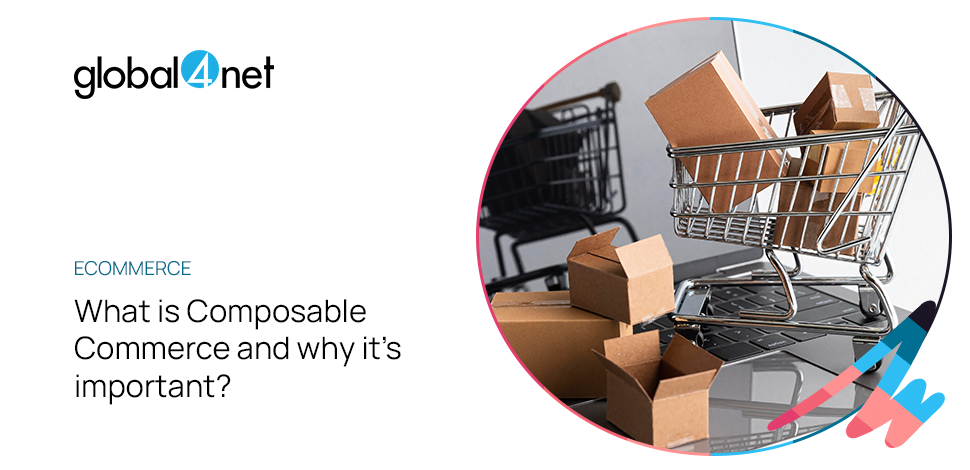ul. Strzegomska 2-4
53-611 Wrocław
NIP 8992786490
KRS 0000608120
REGON 363987723
Global4Net Sp. z o. o.
+48 71 358 41 00
© 2009 – Global4Net. All Rights Reserved.

Composable Commerce is said to be the new phase of digital transformation. It is meant to be better prepared for providing commerce experiences to more demanding customers and answer any new potential needs quickly.
But has this not been done by traditional eCommerce platforms and their technology stack? What Composable Commerce does differently than these platforms and why is it so important right now? After reading this article you will have known:
Without further ado, let’s dive right into Composable Commerce.
Composable Commerce is a new perspective and a way of building commerce on the internet. Composable Commerce is pluggable, scalable, replaceable and can be continuously optimised. Instead of using one bundle of closed technologies, its functioning is based on individual micro-services (functionalities) composed together with linking apps. These micro-services are called Packaged Business Capabilities. They are assorted and aggregated with the sole purpose of improving the business functions of your store.
Instead of semi-headless architecture of eCommerce platforms, it offers a much more decentralised and flexible solution that is based around these numerous micro-services which together form a personalised and fluent headless frontend.
The basic principles of Composable Commerce can be identified as the following:
Composable Commerce utilises modern technologies such as MACH and JAMstack to accommodate to changes on the e-market more quickly.
The MACH technology is important to Composable Commerce as it encapsulates the way CC is meant to work. MACH simply translates into Micro-services, API, Cloud and Headless:
MACH enriches CC with benefits of agile architecture that improves speed of introducing MVP at lesser risk of potential problems. It also automates all upgrades and, what’s most important is brings seamless personalisation on a scale that is unreachable for traditional technologies.
Now that we know how CC is different from traditional bulky eCommerce platforms, comes the question of when is it profitable to use the Composable approach?
This depends heavily on which phase of digital transformation your business is in. More centralised solutions like eCommerce platforms tend to provide basic capabilities that can help you start your e-business from scratch. Their aim is to be universal technologies.
Therefore, their solutions may be just standardised versions that – at the beginning – will probably suffice for your operations. Nevertheless, in the long-term they are destined for improvement or replacement.
One brand cannot offer all the solutions, so as a business owner you should not restrict yourself to one brand. If you can verify that your customers come to your store via different touch-points, then you should consider Composable Commerce.
Thus, you will be able to match the micro-services with all the major channels that are relevant in eCommerce today:
It is profitable to utilise CC, if you have made first steps in digital transformation. It can also be profitable if you are more focused on the long-term effects. Although monolithic platforms may seem safer than decentralised and fluent Composable Commerce, the eCommerce nature is closer to the latter. But does that answer the question: should you implement CC right now?
Gartner Research has published a study titled Composable Commerce Must Be Adopted for the Future of Applications. In this strongly named raport Gartner predicted that companies who have adopted a composable approach will outpace competition by 80% in the speed of new functionalities implementation by 2023.
The composable approach presents a range of benefits that are crucial in a quickly-changing business environment:
The CC approach certainly offers a variety of new ways of handling eCommerce. The freedom of Packaged Business Capabilities and their versatility can make a huge difference when it comes to rapid changes in technologies. Composable Commerce is faster and more adaptable than traditional monolithic solutions. Before you start implementing the CC into your business structure, there are steps that you should take.
First of all, you should perform preparation for this kind of implementation and discuss it with eCommerce experts. At Global4Net we have over 10 years of experience in eCommerce and are more than happy to share our knowledge. Together we can see if Composable Commerce is for you and how you can start integrating it into your business. Contact us and find out for yourself.
Write to us




